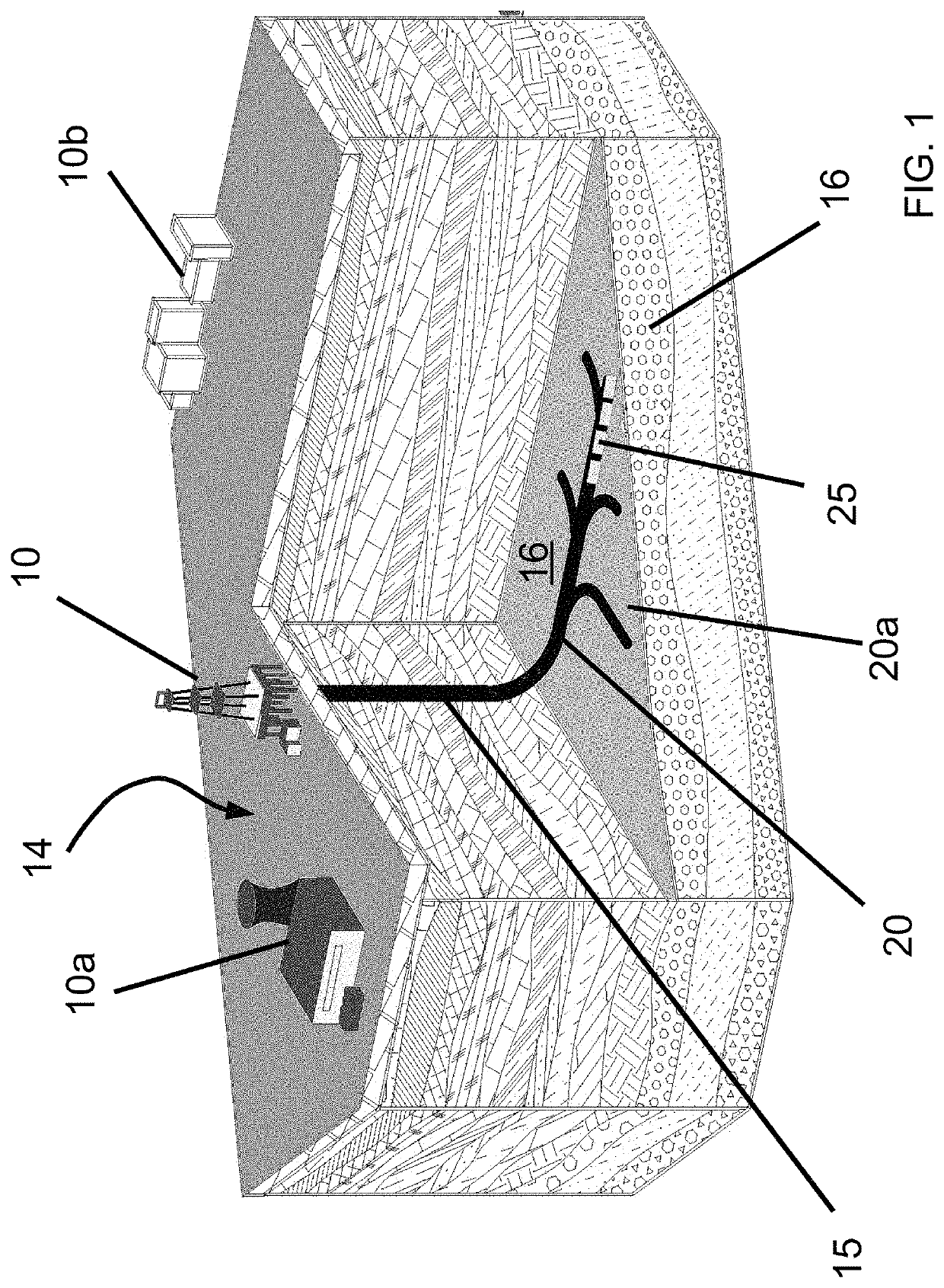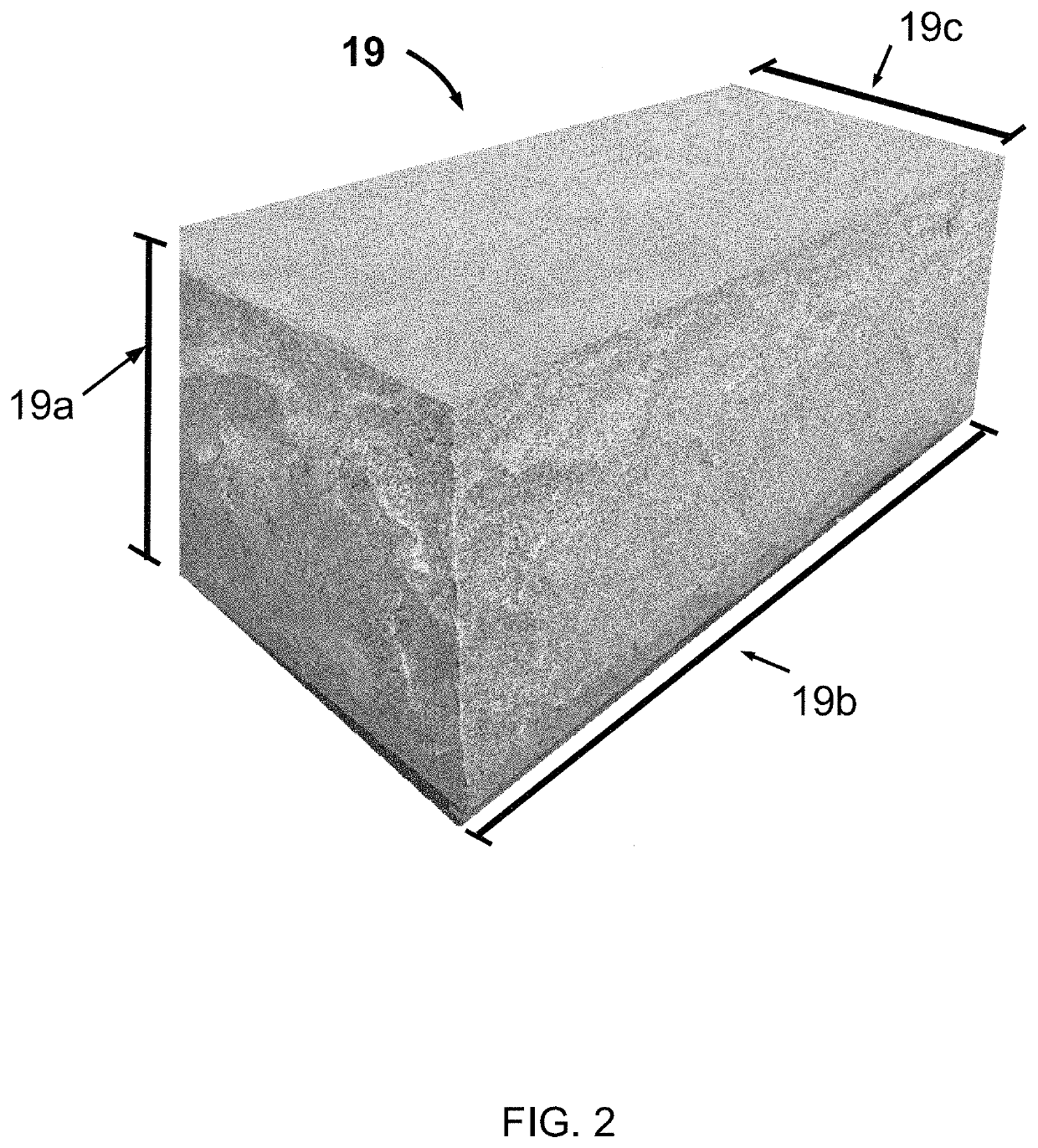Nuclear waste capsule container system
a container system and nuclear waste technology, applied in the field of nuclear waste disposal, can solve the problems of low hydraulic conductivity, high cost of surface operations, and general sparseness, and achieve the effects of long-lasting disposal, saving costs, and being more economical
- Summary
- Abstract
- Description
- Claims
- Application Information
AI Technical Summary
Benefits of technology
Problems solved by technology
Method used
Image
Examples
Embodiment Construction
[0093]In this patent application HLW (high-level solid waste), SNF (spent nuclear fuel), and WGP (weapons-grade plutonium) may be used interchangeably in reference to nuclear waste materials and / or their derivatives to be disposed of and / or stored long-term.
[0094]In this patent application the terms “capsule,”“container” and “canister” may be used interchangeably with the same meaning.
[0095]In this patent application the terms “tube” and “pipe” may be used interchangeably and may refer to cylindrical elements implemented in the design and installation processes of some embodiments of the present invention.
[0096]Note, unless an explicit reference of “vertical wellbore” or “lateral wellbore” (i.e., “horizontal wellbore”) accompanies “wellbore,” use of “wellbore” herein without such explicit reference may refer to vertical wellbores or lateral wellbores, or both vertical and lateral wellbores.
[0097]In this patent application, the terms “wellbore” and “borehole” may be used interchangea...
PUM
 Login to View More
Login to View More Abstract
Description
Claims
Application Information
 Login to View More
Login to View More - R&D
- Intellectual Property
- Life Sciences
- Materials
- Tech Scout
- Unparalleled Data Quality
- Higher Quality Content
- 60% Fewer Hallucinations
Browse by: Latest US Patents, China's latest patents, Technical Efficacy Thesaurus, Application Domain, Technology Topic, Popular Technical Reports.
© 2025 PatSnap. All rights reserved.Legal|Privacy policy|Modern Slavery Act Transparency Statement|Sitemap|About US| Contact US: help@patsnap.com



